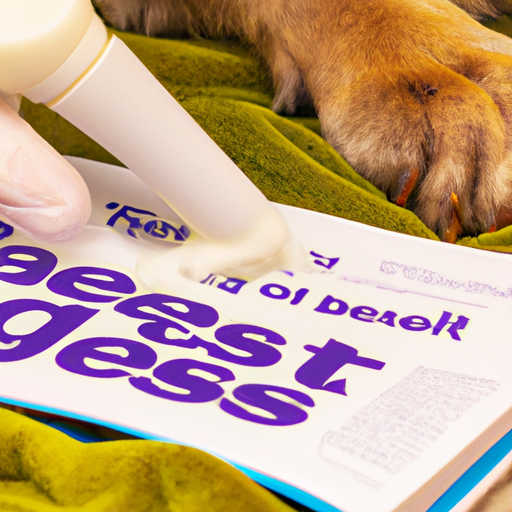A dog is not just a pet, but a member of your family. Just like any other family member, your dog’s health is crucial. Have you noticed your dog constantly licking or chewing its paws? If so, this could be a sign of a yeast infection. Yeast is a type of fungus that lives in small amounts on the skin of dogs. However, when the conditions are right, it can multiply and cause an infection. In this guide, we’ll cover how to treat yeast infections in dogs’ paws.
1. Understanding the Signs and Symptoms
Yeast infections in dogs’ paws often cause discomfort, leading to excessive licking or chewing. Here are some common symptoms:
- Redness and swelling
- Brown discharge
- Foul odor
- Scaly skin
- Hair loss
2. Causes of Yeast Infection in Dogs’ Paws
Yeast on a dog’s paws can increase due to several factors:
- Allergies: Dogs with allergies, either food or environmental, are more prone to yeast infections.
- Hormonal imbalance: Like in humans, hormonal imbalances can cause various issues in dogs, including yeast overgrowth.
- Weak immune system: Dogs with a weakened immune system are more susceptible to infections, including yeast.
3. Diagnosis of Yeast Infection in Dogs’ Paws
To confirm a yeast infection, your vet will conduct a physical examination and may take a sample of the skin cells from your dog’s paw. This sample will be examined under a microscope to detect the presence of yeast.
4. Treating Yeast Infection in Dogs’ Paws
Effective treatment for yeast infection in dogs’ paws involves a combination of topical treatments, oral medications, and lifestyle changes.
Topical Treatments
Using antifungal wipes or shampoos can help reduce yeast on your dog’s skin. These products usually contain ingredients like ketoconazole or chlorhexidine, which are known for their antifungal properties.
Oral Medications
In more severe cases, your vet might prescribe oral antifungal medications. These medications work systemically to combat the yeast infection.
Lifestyle Changes
Diet plays a significant role in managing yeast infections. A diet rich in proteins and low in sugars can help control the yeast population on your dog’s skin.
5. Preventive Measures
Prevention is always better than cure. Here are some tips to prevent yeast infections in dogs’ paws:
- Regular grooming: Keeping your dog’s paws clean can prevent the buildup of yeast.
- Healthy diet: A balanced diet can boost your dog’s immune system and keep yeast at bay.
- Regular vet check-ups: Regular vet visits can help detect any health issues early, including yeast infections.
FAQ
1. Can I treat my dog’s yeast infection at home?
Yes, mild yeast infections can be treated at home using over-the-counter antifungal shampoos or wipes. However, for more severe infections, it’s best to consult your vet.
2. How long does it take for a yeast infection in dogs’ paws to clear up?
With proper treatment, most yeast infections clear up within a few weeks. However, the exact duration can vary depending on the severity of the infection and your dog’s overall health.
3. Can a yeast infection in dogs’ paws spread to humans?
No, yeast infections in dogs’ paws are not contagious to humans. However, it’s always a good idea to wash your hands after handling your dog’s paws.
4. Can a yeast infection in dogs’ paws recur?
Yes, yeast infections can recur, especially if the underlying cause is not addressed. This is why it’s crucial to follow through with the entire course of treatment and take preventive measures.
5. What happens if a yeast infection in dogs’ paws is left untreated?
If left untreated, a yeast infection in your dog’s paws can lead to chronic pain, skin damage, and a reduced quality of life. Therefore, it’s essential to seek treatment as soon as you notice symptoms.
Remember, your dog relies on you for its wellbeing. Recognizing and treating a yeast infection in your dog’s paws promptly can save your furry friend from unnecessary discomfort and help them live a happy and healthy life.



